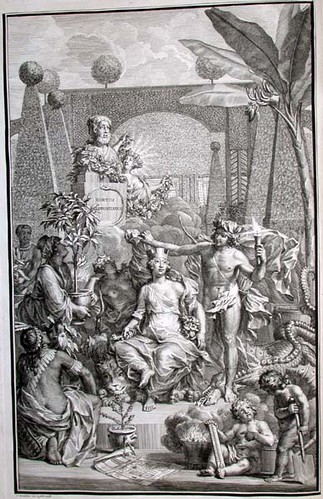Carl von Linné: Hortus Cliffortianus
Amsterdam: 1737
Sp Coll Old Library Bi1-a.3
This work, along with the author's Genera plantarum and Species plantarum, forms the starting point of modern systematic botany. Linnaeus established the principles of class, order, genus and species for all plants and animals. His botanical system was based mainly on flower parts, which tend to remain unchanged during the course of evolution. Linnaeus devised a method of twenty-four classes dependent on the number, union and relative length of the stamens: the classes were then subdivided into orders according to the number of styles. It was the simplest system yet devised and although artificial - as Linnaeus himself recognised - it had the great merit of enabling students to place a plant in a named category quickly and easily - and that at a period when the richness of the world's vegetation was being discovered at a rate that outstripped more leisurely methods of investigation. So successful was this method in practice that its facile application was the greatest obstacle to its replacement by the more natural systems that eventually superseded it.
Hortus Cliffortianus is a catalogue of the magnificent garden at Hartekamp in Holland belonging to the Anglo-Dutch banker, George Clifford. Linnaeus lived there for two years and wrote the text in nine months. The plates are engraved from drawings by the great German flower artist, Georg Ehret (1708-1770). Soon after its publication, Linnaeus returned to Sweden and in 1741 was appointed to the Chair of Medicine at Uppsala, exchanging this post a year later for the Chair of Botany.
Previous page ; next page





